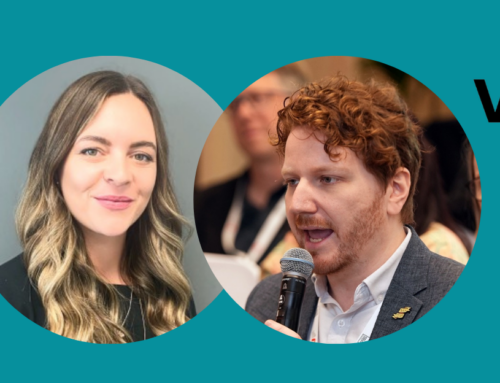 Are Nonprofit Volunteers Enchanted with Their Experience?
Are Nonprofit Volunteers Enchanted with Their Experience?
When you think about the experience of nonprofit volunteers how would you rate it?
I mean if you were being truly honest about it.
How would you rate how supporters connect with your organization, get prepared to serve, and are treated when they show up?
Are they greeted with smiles and encouragement, or ignored? Are they given the same level of collegial respect and grace as paid employees, or are they blamed when they make a mistake? Are they appreciated and recognized individually for their sacrifice of time and contribution of talent, or is it taken for granted?
These are important questions to ask because their level of effort is directly tied to your ability to meet their needs.
Research shows time and time again that an organization’s ability to retain volunteer talent directly correlates with their level of satisfaction.
In short, your level of customer service related to volunteers, matters.
So, what if you could level up the experiences of nonprofit volunteers? What if you could convert them into raving fans? How would this impact your ability to attract future supporters, even cultivate donors?
What could an exceptional volunteer experience do to drive robust word-of-mouth buzz about your mission? What could expanded awareness of your cause do for your nonprofit’s sustainability?
Not only does a stellar volunteer experience result in deeper engagement, but happy volunteers also become your agency’s most loyal, dedicated, and generous fans.
And, having a broad base of raving fans are your best ambassadors and advocates and are your best insurance against the whims of today’s funding environments.
How to Enchant Your Nonprofit Volunteers
A few years ago Guy Kawasaki, the former chief tech evangelist for Apple and now for Canva, published the book Enchantment: The Art of Changing Hearts, Minds, and Actions. It generated plenty of buzz among tech fans, but his ideas easily translate to non-tech social sector work as well.
In it, he argues that creating enchantment is the key to success in business. I think that also applies to nonprofit volunteers and community engagement, too.
Kawasaki posed three keys to enchantment. Here are my thoughts on how each relates to the volunteer environment. What do you think? Would these make your organization irresistible?
Key #1: Are You Likable?

Is your environment friendly and open? Are people generous with their smiles? Does everyone your organization greet volunteers every time they see them? Do people show they care about each other or just show up for work?
Key #2: Are You Trustworthy?
Can you be trusted? Do you follow through on every commitment made? Are your decisions transparent? Do you give accurate information, consistently? Do you always give the benefit of the doubt? Is “yes” your default answer to most requests? Are you focused on giving versus receiving?
Key #3: Do You Have a Great Product or Service?
Kawasaki used the acronym DICEE to describe a fantastic product. How do these apply to your organization? Do these describe your volunteer experience?
- Deep (lots of functionality, lots of features)
Are there a number of roles for volunteers to choose from? Is there flexibility in where, when, and how they can contribute their time? Are there lots of resources and training to support their work?
- Intelligent (they understand me, anticipate my need)
Do you know what drives your volunteers’ individual satisfaction with their experience? Do you persistently gather feedback on how you can improve? Do you change your processes to better respond to volunteer needs, or do you do things because you’ve always done them that way?
- Complete (moves beyond just product sales to post-purchase support)
Do you provide solid attention and support through all stages of the volunteer life cycle, from outreach and recruitment, to training and placement, to retention and recognition, to saying goodbye?
- Elegant (a great user interface)
Are your materials, forms, and tools well designed and user-friendly? Are your publications and training materials crisp and clean? Is the volunteer work environment, either on-line or on-land, uncluttered? Are your technology tools easy to navigate?
- Empowering (results in peace of mind, brings joy)
Are people encouraged to have fun? Do you celebrate successes, both small and large? Are volunteers able to fulfill their personal life purpose through their work with your organization? I would argue that this the most important of all.
When you think about the experience of your volunteers, in which area could you improve? Which would have the greatest impact on volunteer satisfaction?
What are the Basics of Exceptional Customer Service for Nonprofit Volunteers?

Another powerful way to enchant both volunteers and donors is to give them a great experience is to anticipate their needs and deliver on them before they arise.
A few years ago, I read the book Exceptional Service, Exceptional Profit by Micah Solomon and Leonardo Inghilleri.
It really got me thinking about customer service in the third sector. Is it good enough or can we do better?
What if we delivered a five-star service to each and every person we touched? What if your organization was known as the Ritz Carlton or Nordstrom of nonprofits (in terms of service, not budget)?
How would that impact the loyalty of your clients, volunteers, and supporters? How about your staff morale? How would improved service boost your marketing and fundraising efforts?
I believe that focused attention on delivering exceptional service can have a positive impact on individual client’s lives, program outcomes, your volunteers, donors, and your overall financial sustainability.
And it needn’t cost an arm and a leg to pull it off.
So, let’s break down the good, the bad, and the ugly of customer service, in general.
The Ugly
We’ve all had horrible customer service experiences, ones that make you want to pull out your pistol like Clint Eastwood and take everyone out, Dirty Harry style. Make my day, you @%$#%@!!!
I remember more than once having to deal with impossible car rental agents after a long and exhausting business flight. Have you been there? I swear these situations are enough to make your head spin ‘round!
Luckily, those bad experiences aren’t the norm. By the same token, neither are stellar customer service interactions. When was the last time you raved about the service you received? Nonprofits have an incredible opportunity to stand out from the crowd both in nonprofit and for-profit circles.
The Bad
But, let’s put aside the worst service incidents ever for a moment and focus on things that are a little more subtle and common — bland, mediocre customer service.
These interactions are barely worth a mention because they are practically invisible to us. Do you notice much difference between your trips to various supermarkets or gas stations? Not really.
In most cases, there’s nothing that distinguishes them from their competitors. Usually, they are conveniently located along your frequent travel routes.
But what if one of your local dry cleaners were super friendly and went out of their way to serve your needs? Would that be enough to capture your attention enough to win your loyalty? Maybe.
The Good
Solomon and Inghilleri assert that “actual service, from someone who offers a caring face and a helping hand, is a universal desire.” Fair enough.
Nonprofits could argue that their services are already friendly and helpful, not to mention free or low cost. In fact, many organizations regularly monitor their customer satisfaction and report glowing results.
So, what will set your agency apart from your competition (whether your rivals are other organizations or simply the public’s resistance to your calls to action)?
What will catapult your organization to the highest levels of service excellence?
Solomon and Inghilleri contend that “the magic happens when you, your systems, and your employees throughout the ranks of your organization anticipate the needs of your customers.”
If your team can learn to recognize and respond appropriately to your customer’s needs before they share them, you will reap the rewards of a truly customer-centered organization.
So how do you do that?
How to Anticipate the Needs of Your Most Important Supporters
 Here are a few steps you can take to get the ball rolling on better volunteer service and better volunteer results.
Here are a few steps you can take to get the ball rolling on better volunteer service and better volunteer results.
1) Capture your Volunteer’s Preferences
Keep up to date details on people you will interact with more than once, like birthdays, preferred communication methods, feedback, etc. and use them when you are in contact.
2) Reach Out to Volunteers at Optimal Moments
Anticipate when they’ll need help. If you recruit volunteers for specific events, for example, help last years’ volunteers beat the rush by offering early alerts and preferred shift times.
3) Reduce Wasted Time and Repetition
Even if you interact with volunteers only once and don’t know them well, you can find ways to add value to their experience. Take a walk in your volunteers’ shoes. Analyze your business processes from their eyes. Is there anywhere you can streamline or simplify? Check out my free Ultimate Volunteer Experience Roadmap for an easy process to analyze and improve touchpoints.
4) Encourage Fast Feedback
Rather than asking volunteers to fill out long surveys that interrupt their busy day, ask them to complete quick, mini polls of no more than three questions. You can collect responses online and on land. Focus on a specific area of the volunteer experience you’d like to improve versus asking about general overall satisfaction. That way you’ll be sure to gather actionable intel you can really use.
5) Train Your Team
Make sure everyone on your team understands their role as your organization’s brand ambassador. Supporting volunteers is everyone’s job. Make sure your team represents you well by offering training on how to understand subtle volunteer clues they are in trouble, and manage conflict effectively, so they can adjust their support accordingly. Training should start on day one. Check out our free Mini-Course – The Art & Science of Volunteer Accountability for tips on how to develop a system that keeps volunteers coming back.
Exceptional service isn’t rocket science, but it does take time and persistent attention. I believe the payoff is worth the effort.
Imagine what your organization could do with a new influx of loyal evangelists out there singing your praises? What could you achieve?
Ready to Drive Higher Rates of Loyalty in Your Supporters?
Check out our free VolunteerPro tip sheet chick full of fresh, evidence-based ideas on how to keep enthusiastic, engaged volunteers coming back for more.
7 Secrets to High Volunteer Loyalty Cheat Sheet







Leave A Comment